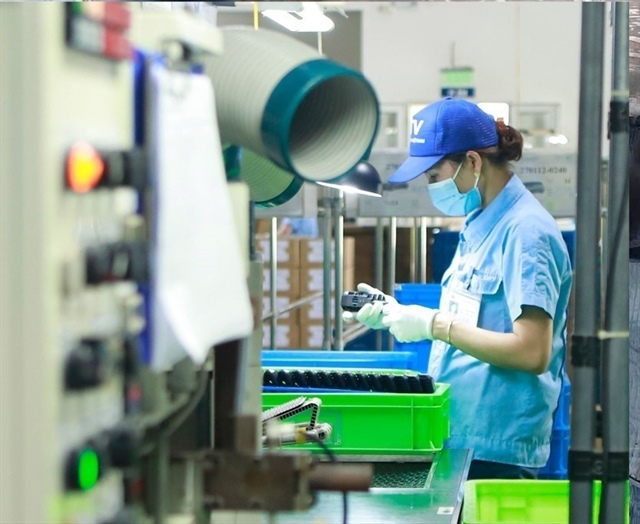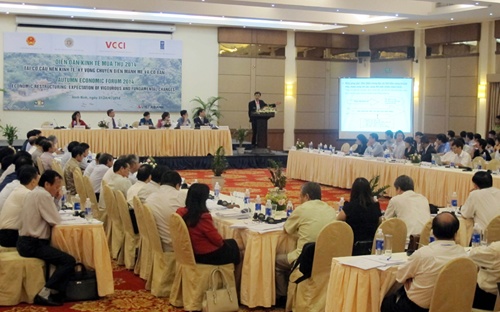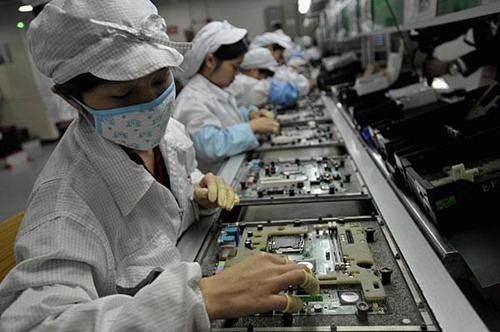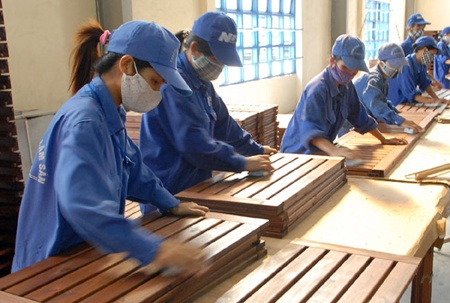VN farmers face more fruitful future in US
VN farmers face more fruitful future in US
Viet Nam will be exporting litchi and longan to the United States and is preparing to export more fruit when it joins the ASEAN Economic Community (AEC) next year.

Nguyen Xuan Hong, Director of the Plant Protection Department under the Ministry of Agriculture and Rural Development, tells Viet Nam News about the challenges for the fruit market at home and aboard.
What challenges will the domestic fruit market face after Viet Nam joins the AEC?
Viet Nam has been importing 400,000 tonnes of fruit from other countries and exporting 1.3 million tonnes of fruit to other countries every year. This means our annual exports are often three times higher than our annual imports.
The domestic fruit market includes Vietnamese fruits and some imported fruits.
Meanwhile, Viet Nam has advantages in the export of certain kinds of fruit such as dragon fruit, litchi and mango, and many countries have a high demand for such fruits from Viet Nam.
The issue here is how Viet Nam should organise production to meet the demand of importing countries which follow strict standards on quality, food hygiene and safety. This leads to an increase in the consumption of farmers, as well as in export volume.
Regarding competition pressure on local fruits from imported fruits after the country opens the doors under the AEC commitments, I think there is no pressure because imported and local fruits have advantages that vary from each other.
Viet Nam has exported tropical fruits to temperate countries which, in turn, have exported their fruits to Viet Nam. That is normal. Viet Nam permits other countries to export their fruits to us, and other countries permit Viet Nam to export its fruits to them.
Viet Nam has a variety of succulent fruits but few of them could enter strict markets abroad. What are the barriers to Viet Nam's fruits in these markets?
One of the barriers is plant quarantine. Viet Nam must pay the high cost of plant quarantine services for fruits that have been exported to markets such as the United States, South Korea and Japan.
The others are strict food hygiene and safety standards. In fact, Viet Nam has to meet these standards first to increase its fruit exports to other countries.
In the future, Viet Nam will restructure its plantations to further improve the quality and production efficiency of fruits, and thereby increase the quantity and value of its fruit exports.
In the early part of September, the US Department of Agriculture opened the doors to litchi and longan exports from Viet Nam. What did the country do to take full advantage of this opportunity?
Viet Nam has exported some fruits to the US market, which has a high demand for quality food and also brings high value to exporters. Viet Nam has continued negotiations for the export of star apple and mango to that market in the future.
To take full advantage of the opportunity that the US has given to Vietnamese fruits, the country must organise large regions for large-scale planning and production because importing countries demand for the code of the fruit-growing regions to be able to determine the origin of fruit exports whenever they have problems with plant quarantine, food hygiene and safety.
We must apply high technology, including preservation, to post-harvest production to ensure the fruits' long-term quality.
Therefore, Vietnamese research institutes should promote research and apply the technology on fruit production to meet importing countries' standards.
Meanwhile, domestic enterprises that export fruits to the US should pay attention to the kinds of fruits that require export licences and plant quarantine certificates from Viet Nam's Plant Protection Department, as well as food hygiene and safety guarantees from the US environment protection office.
Viet Nam spent a long time negotiating with the US for the export of litchi and longan to its market. What are the reasons for this?
Negotiations for the opening of the US market to Vietnamese fruits has depended on a number of factors. Initially, the US plant quarantine offices must take time to assess the risk of and solutions to plant diseases, in accordance with US standards.
The amount of time for negotiations depends on the standards and preferences of each country, with Viet Nam spending up to five years to get export licences for its fruit from some countries.
Now, Viet Nam has much experience in providing required documentation and information to importing countries during negotiations, so these negotiations could be quickly concluded.
Quick negotiations are also the result of good co-operation among the Ministries of Agriculture and Rural Development, Industry and Trade, and Foreign Affairs, as well as good international relationships.
What does the department do to export more Vietnamese fruit to the world market?
The department has updated information on the fruit export requirements of importing countries and released these to domestic farmers and enterprises. Equipped with this information, farmers and enterprises can now produce and trade in line with such requirements, to increase their opportunities to export more fruit and earn more profits from such exports in the future.
vietnamnet






















